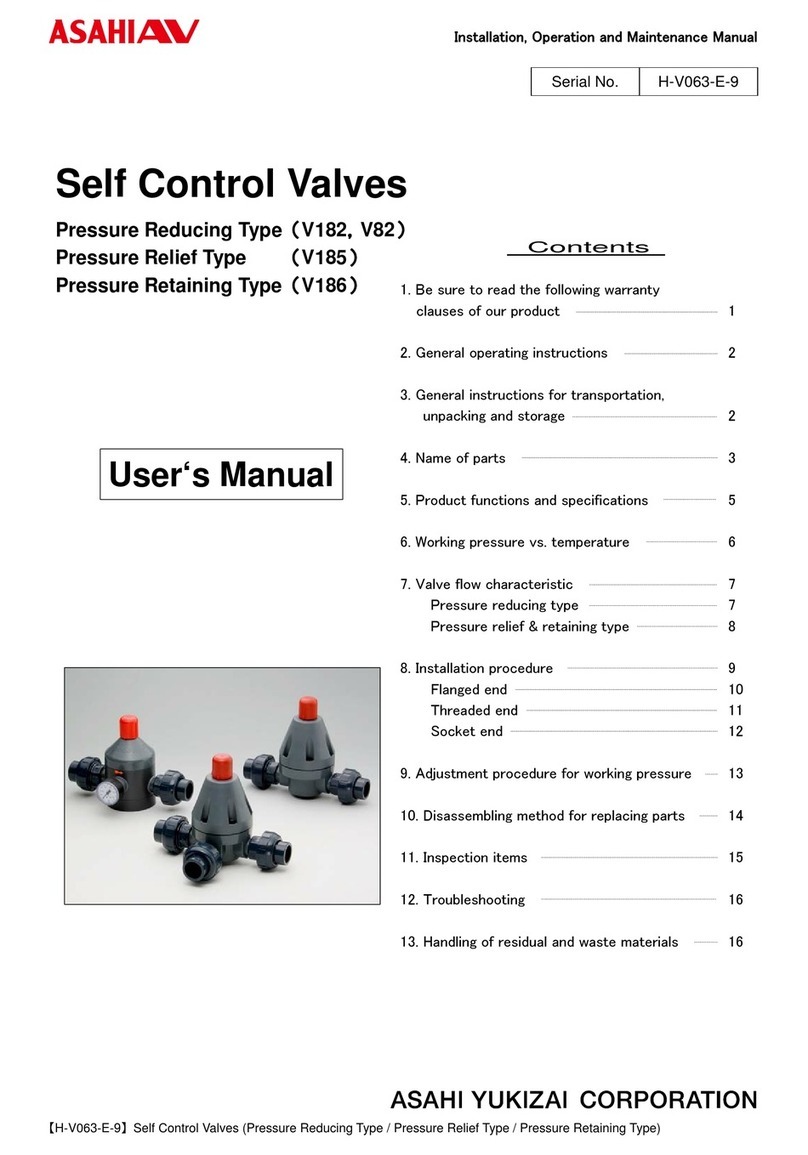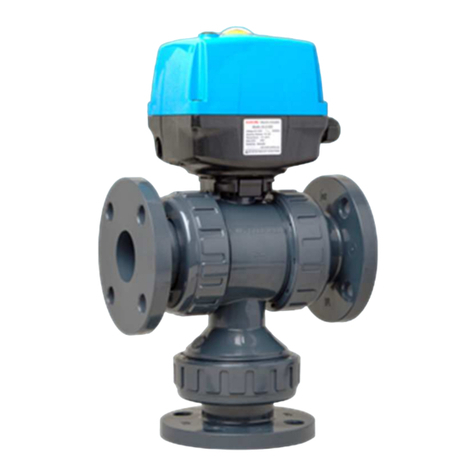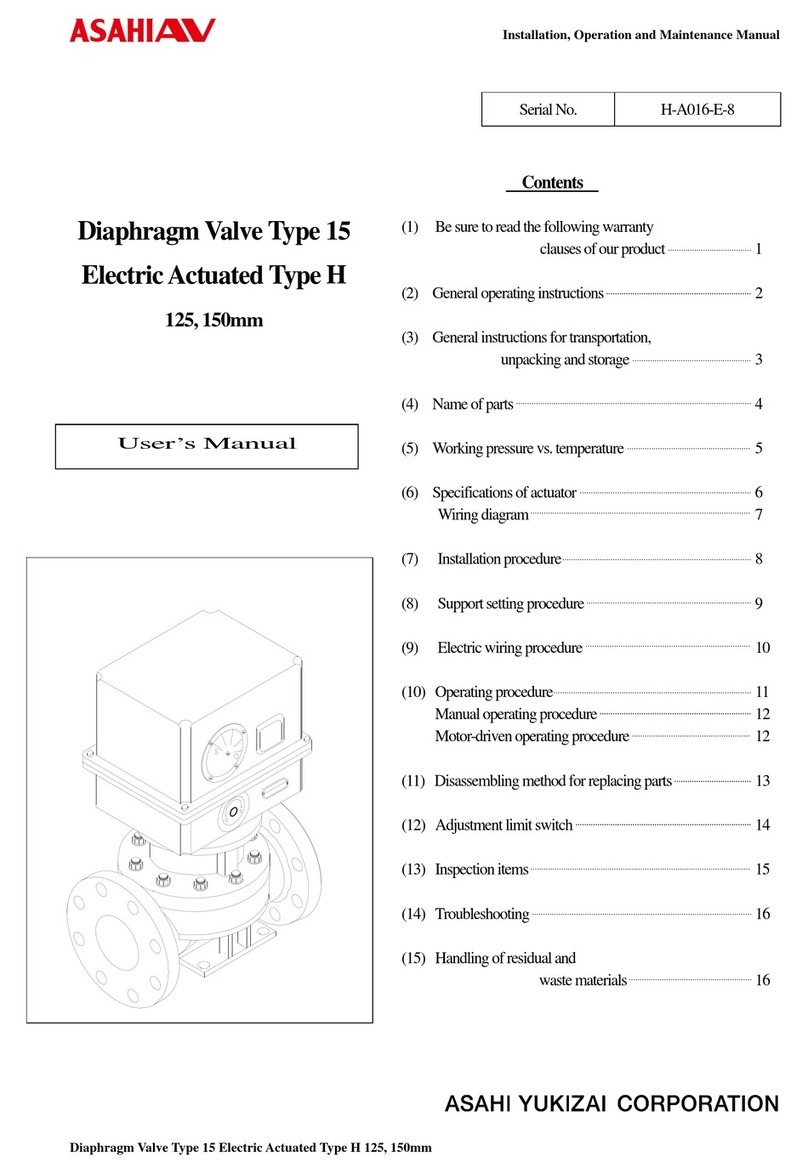
Installation, Operation and Maintenance Manual
Diaphragm Valve Type 15 Pneumatic Actuated Type AV 1
This user’s guide contains information important to the proper installation, maintenance and safe use of an
ASAHI AV Product. Please store this manual in an easily accessible location.
<Warning & Caution Signs>
This symbol reminds the user to take caution due to the potential for serious injury or death.
This symbol reminds the user to take caution due to the potential for damage to the valve if used in
such a manner.
<Prohibited & MandatoryAction Signs>
Prohibited: When operating the valve, this symbol indicates an action that should not be taken.
Mandatory action: When operating the valve, this symbol indicates mandatory actions that must be
adhered to.
(1)Be sure to read the following warranty clauses of our product
- Always observe the specifications of and the precautions and instructions on using our product.
- We always strive to improve product quality and reliability, but cannot guarantee perfection. Therefore, should
you intend to use this product with any equipment or machinery that may pose the risk of serious or even fatal
injury, or property damage, ensure an appropriate safety design or take other measures with sufficient
consideration given to possible problems. We shall assume no responsibility for any inconvenience stemming
from any action on your part without our written consent in the form of specifications or other documented
approval.
- The related technical documents, operation manuals, and other documentation prescribe precautions on
selecting, constructing, installing, operating, maintaining, and servicing our products. For details, consult
with our nearest distributor or agent.
- Our product warranty extends for one and a half years after the product is shipped from our factory or one year
after the product is installed, whichever comes first. Any product abnormality that occurs during the
warranty period or which is reported to us will be investigated immediately to identify its cause. Should our
product be deemed defective, we shall assume the responsibility to repair or replace it free of charge.
- Any repair or replacement needed after the warranty period ends shall be charged to the customer.
- The warranty does not cover the following cases:
(1) Using our product under any condition not covered by our defined scope of warranty.
(2) Failure to observe our defined precautions or instructions regarding the construction, installation, handling,
maintenance, or servicing of our product.
(3) Any inconvenience caused by any product other than ours.
(4) Remodeling or otherwise modifying our product by anyone other than us.
(5) Using any part of our product for anything other than the intended use of the product.
(6) Any abnormality that occurs due to a natural disaster, accident, or other incident not stemming from
something inside our product.
Warning
Caution







































